Reviewing bald eagle facts reveals the fascinating history of a bird revered by both Native Americans and Americans but also tells the sad story of an creature almost driven to extinction by humans.
During the mid-twentieth century, the bald eagle population was reduced to less than a thousand in 48 states due to illegal shooting of the bird, loss of habitat and pesticide use, specifically DDT.
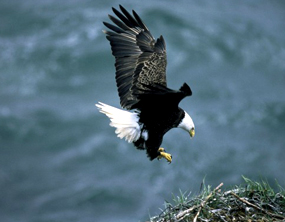
Ornithologists discovered that DDT caused the birds to lay eggs made of thin, fragile shells because it interfered with the bald eagle’s metabolism. When mother eagles sat on the eggs to warm them, the shells were breaking and killing babies.
Bald Eagle Protection Act of 1940 tried to conserve the American bald eagle by prohibiting people from taking or destroying the bird’s nests, eggs and feathers. Bald eagle facts and statistics tell us that by 1982, it was estimated 5000 bald eagle breeding pairs were in the U.S., up from the 400 estimated breeding pairs existing in 1963.
In 1995, the U.S. government removed the bird from its list of endangered species and placed it on the “threatened” list of animals considered to have less than adequate populations. Finally, in 2007, bald eagles moved off the list as a “threatened” species and into a “least concern” category comprising the IUCN Red List of Threatened Species.
Interesting Facts about The Bald Eagle
These interesting creatures capture our attention and imagination. Some truths concerning the birds include:
• Eagles are “birds of prey” or “raptors” which are birds that hunt food “on the wing” or by flying in the air and rarely do they hunt food while on the ground.
• American bald eagles and golden eagles inhabit North America, while other eagles live in Africa, Eurasia, South America and Australia.
• Eagles are considerably larger than other birds, with many of them much larger than other raptor-type birds. Vultures are the only birds of prey bigger than eagles.
• Eagles have extremely acute eyesight enhanced by enormous pupils that greatly reduce the amount of diffraction produced by incoming illumination
• Bald eagles can have wingspans as long as 90 inches that is seven feet across.
• Female eagles are larger than males.
• Both male and female eagles possess the same coloring, with white heads and tails and brown bodies. Feet, irises and beaks are bright yellow.
• Bald eagle facts about hunting style reveals the existence of a hind toe talon that pierces a prey’s heart and lungs while being held in the grip of the eagle’s strong front talons.
• Fish is the eagles’ favorite food but it will eat anything if necessary, including small rodents, mammals and even carrion.
• Bald eagles can begin reproducing when they are around five years old.
• Nests constructed with sticks and twigs by these birds are quite large, up to eight feet wide and 12 feet deep
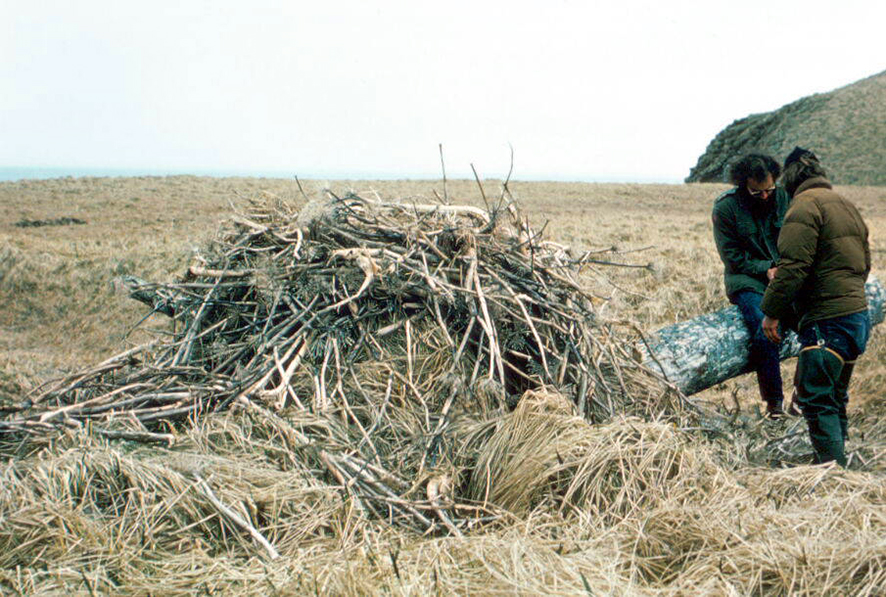
• Researchers think that bald eagles mate for life but have yet to verify this as true.
• Bald eagles can live up to 30 years in the wild. In captivity, they have been known to live as long as 50 years.
• Bald eagle facts reveal that these birds have no real predators to worry about, other than humans. Hawks may take advantage of an injured juvenile but since eagles remain airborne or perched high in trees, other animals have no way of preying on them.
• Bald eagles are not bald; the white feathers covering their heads make them seem “bald” when viewed from a distance.
• The average number of feathers found on mature bald eagles is around 6500 to 7000.
Habitat Facts of the Bald Eagle
Areas of open water attract the bald eagle where they can hunt for their favorite foods.
In fact, research concerning habitat preferences has shown that eagles prefer lakes with a circumference of at least seven to eight miles!
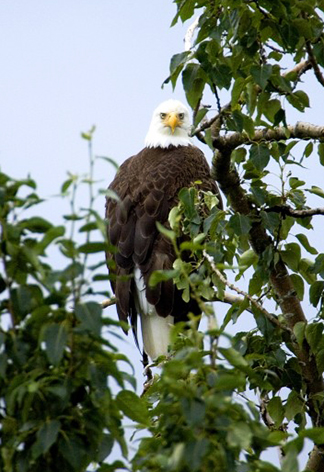
They also require sturdy, mature trees, such as hardwood or coniferous trees that are growing near watery areas, which can withstand the weight of bald eagles as well as their nesting and roosting habits.
Bald eagles are disturbed by human activity and choose habitats usually one to two miles away from populated areas.
The American bald eagle is considered a “sea eagle,” the only sea eagle indigenous to North America.
It has been seen in numerous regions, from the Louisiana bayous to New England to even the Sonora Desert. However, observers are most likely to spot an eagle in Canada or Alaska, where they are most populous.
Bald eagle facts about reproduction behavior tells us that once mature eagles have found a suitable habitat near plentiful water sources, a female will lay two or three eggs annually in nests that are frequently reused.
Incubation is around one month, with babies developing the ability to fly in 90 days. Generally, only one eagle survives infancy and childhood.
Today bald eagles live in all of the lower 48 states but have also been seen in Central Mexico. When it is time to breed during summer, bald eagles will fly to the northern U.S. and Canada and build nests about three months before laying eggs.
Most of the photos here are found on this page, where you can find a lot more beautiful pictures of this amazing bird.
Evolutionary History
Since all birds evolved from dinosaurs, the bald eagle may have already been gracing the skies over 20 million years ago as a descendent of a group of early birds of prey called “kites.”
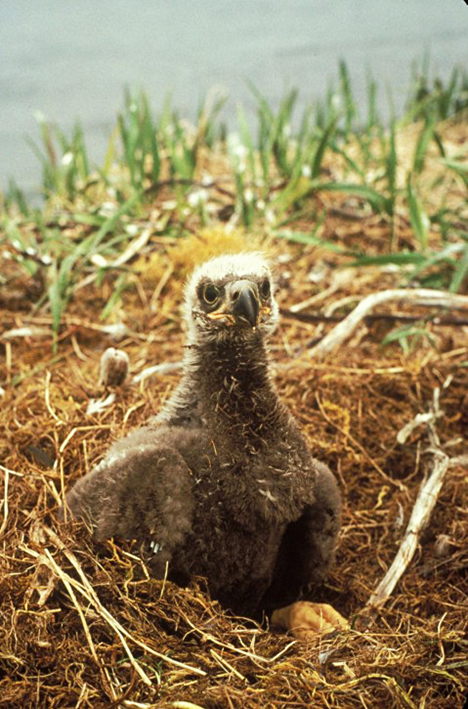
Kites still exist today as slightly smaller, less colorful versions of bald eagles.
In fact, most of these raptor birds emerged from the kite line of birds, each sharing similar traits such as having four powerful talons for toes and tiny grooves in their mouths that facilitate grasping and holding onto wriggling fish.
Bald eagle information discovered after many years of research also tells us that special black pigment contained in wing feathers protects the wings against breaking when an eagle spies prey and dives forcefully into the water to capture it.
Bald eagles, as well as other birds of prey such as the hawk, osprey and the condor, have evolved the traits that enhance their ability to capture prey living on or in the water.
In addition, these traits provide excellent protection against predation from other animals except, unfortunately, man.
You can read more about the Bald Eagle here.
The Mechanics of Soaring and Gliding
Bald eagles and other birds of prey can remain high in the air without flapping their wings by soaring and gliding along warm air currents.
They have evolved to master this technique because of their predatory nature; staying aloft thousands of feet above the grounds affords them the opportunity to scan large areas of land for food without being detected.
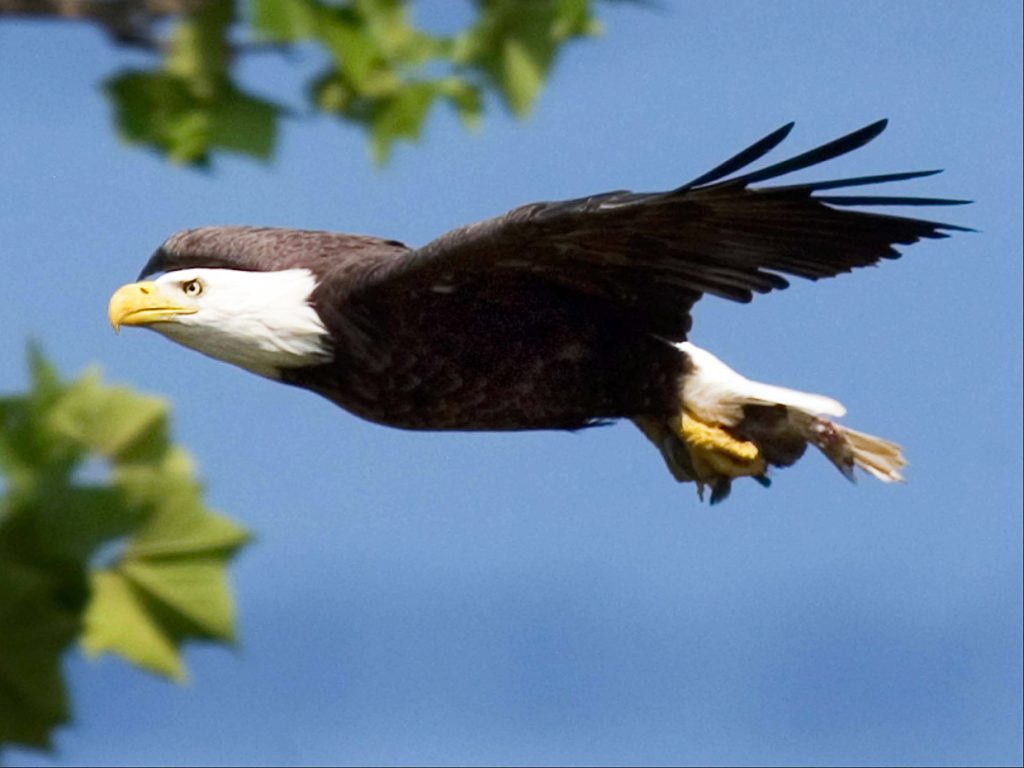
When an eagle is gliding, his wings are fully extended but they do not flap up and down. This means the eagle will lose about a foot of height for every 20 feet of land over which he is “gliding.”
Eventually, he will have to flap his wings in order to remain aloft.
Soaring, however, are very different from gliding.
When bald eagles soar, this indicates he is flying into an upward moving air current, which is generally warmer than other air currents.
This type of air current is generated over towns with plenty of houses, roofs and tarred roads, rising more forcefully upward as heat increases from a bright, midday sun.
Eagles can also gain altitude by “banking,” or simply lifting one wing higher than the other while flying over and into warm air.
Facts of the Bald Eagle Eyesight
Flying high above the surface of the earth, the eagle needs sharp eyesight to detect the prey below. In addition:
• Bald eagles have two foveae instead of one, which allows them to see sideways and forward simultaneously. They also possess many more foveal cells than humans.
• Eagles are able to see fish while gliding or soaring many hundreds of feet above water, a difficult if not impossible feat for humans to accomplish.
• Bald eagles have two eyelids: one for closing during sleep and one that keeps the eyes clear of dust by sliding across the eyes every two or three seconds. This “inner” eyelid is a thin, moist piece of skin called the nictitating membrane that allows the eagle to continue watching for prey because of its translucent quality
• Bald eagle facts indicate that eagles can see colors, like all other birds
• An eagle’s vision is more than four times better than that of someone who has 20/20 vision
• A bald eagle’s slightly jutting eyebrows provide added protection against injury. It also prevents the sun from blinding them when scanning for potential prey in the afternoon sun.
Other Birds of Prey
Investigating bald eagle facts involve examining other birds of prey, which possess similar traits and behaviors of the bald eagle. These birds include:
• Buzzards
• Condors
• Hawks
• Ospreys
• Vultures
• Falcons
• Kites
• Harriers
• Sandhill crane
• Various sea birds such as gulls, pelicans, storks, albatrosses, terns and frigate birds
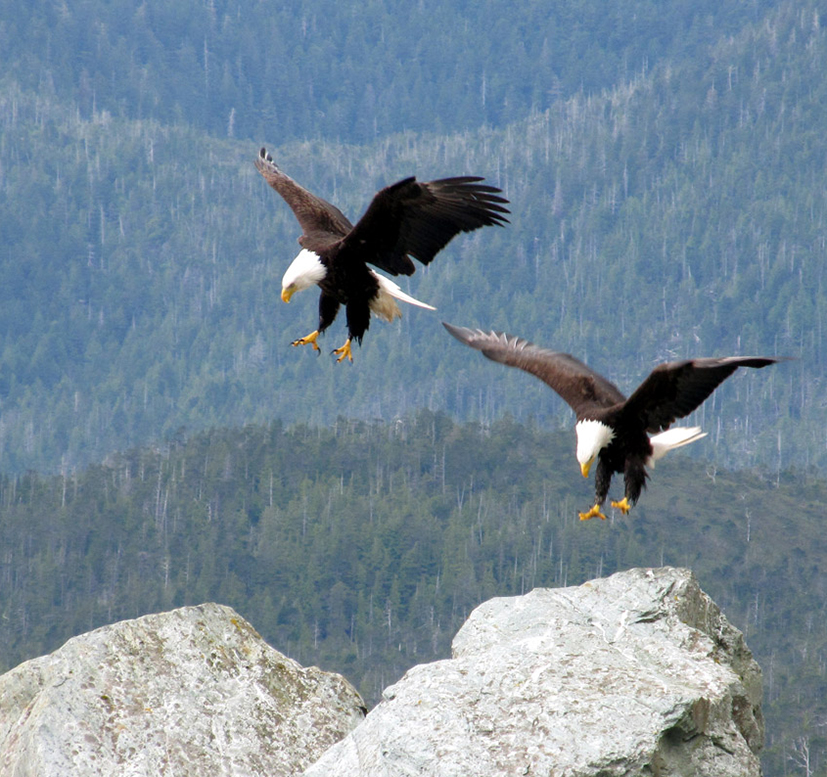
Actually, it is the vulture that should be referred to as “bald” since they do have featherless heads.
Having a bald head helps the vulture stay cleaner when he is scavenging badly injured or dead carcasses. This baldness also promotes the vulture’s thermoregulating system, which helps keep them cool in warmer climates. Ornithologists also think that people may have mistaken vultures for bald eagles at one time, hence the name “bald” eagle.
Bald eagle facts indicate that although they are both birds of prey, the bald eagle and vulture differ in ways pertaining to their methods of obtaining and consuming prey. While eagles will attack perfectly healthy animals, vultures will only attack creatures that are already sick or wounded.
Bald Eagle Versus Stellar’s Sea Eagle
Included with various bald eagle facts is fascinating information about another member of the eagle family called Stellar’s sea eagle.
Also referred to as the white-shouldered eagle or by its Japanese name O-washi, this eagle is found on one of Japan’s main islands, Hokkaido but flies to eastern Russia to breed, near the Kamchatka Peninsula and coasts of the Sea of Okhotsk.
A few Stellar’s sea eagles have even been seen migrating as far as the Pribilof and Aleutian Islands off the coast of Alaska.
As one of the heaviest and largest eagles, Stellar’s sea eagle outweighs the American bald eagle by several pounds. Males can weigh up to 15 pounds and females as much as 20 pounds. Bald eagles average about nine or ten pounds.
Similar to the bald eagle in appearance, this bird has a dark brown, almost blackish body, yellowish eyes, unfeathered feet and powerful talons for clutching fish and small mammals. Although researchers do not know exactly how long a Stellar’s sea eagle lives in the wild, they suspect it is nearly the same length as a bald eagle, around 30 years.
Golden Eagle Facts
Living in Eurasia, Africa and North America, the golden eagle is lighter colored than the bald eagle, with gold and brown plumage on their necks and heads and dark brown bodies.
Smaller than bald eagles, golden eagles are extremely agile and speedy when hunting prey, which consists of marmots, rabbits, squirrels and even larger animals such as foxes and deer.
Ornithologists think they also mate for life as bald eagles, constructing enormous nests in which female golden eagles lay anywhere from two to four eggs.
One obvious difference between bald eagle facts and golden eagle facts is that golden eagles also prey on other birds, specifically game birds such as grouse, turkey, pheasant and quail.
Although not as large as buzzards or vultures, golden eagles are extremely aggressive and will attack raptors in an attempt to chase them away from carrion.
Competition over territory and prey sometimes occurs with bald eagles and white-tailed eagles as well.
Bald Eagles and other Raptors
Bald eagle information tells us that birds of prey keep the rodent pest population in check by eating animals that destroy crops and cause disease such as rats, mice, hares, moles and even large insects such as leaf-eating grasshoppers.
Additionally, the condition of an ecosystem can be judged by the amount of raptors inhabiting its domain.
Because these birds are at the top of their specific food chain, the eagle family of birds relies on rich water resources as well as trees and other flora needed by smaller creatures to survive.
When areas frequented by raptors seem oddly devoid of them, something is disrupting the ecosystem and causing a reduction in wildlife and resources.
The American Bald Eagle as a Symbol of the United States
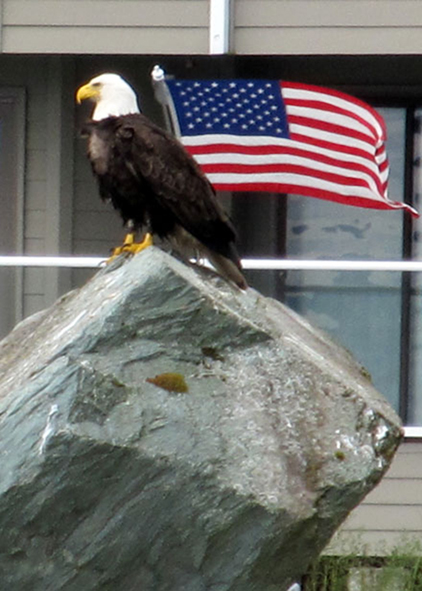
A list of bald eagle facts is not complete without mentioning its importance as an iconic symbol of freedom and as the U.S. National Seal’s main image.
Chosen in 1782 to represent the American National Bird, the American bald eagle can now also be found on U.S. currency as well as parts of numerous organizational and company emblems.
Among the men who chose the bald eagle to dominate the National Seal was Benjamin Franklin, who later expressed his disproval of the choice.
About the American bald eagle Franklin wrote: “I wish that the bald eagle had not been chosen as the representative of our country.
He is a bird of bad moral character; he does not get his living honestly. You may have seen him perched on some dead tree where, too lazy to fish for himself, he watches the labor of the hawk…and takes the fish from him… He is therefore by no means a proper emblem for the brave and honest…of America.”
Mr. Franklin wanted the turkey to be the U.S. nation bird. He said that “it is in comparison a much more respectable bird…a bird of courage, although a little vain and silly…it would not hesitate to attack a grenadier of the British guards, who should presume to invade his farmyard with a red coat on.”
Fortunately, no one paid much attention to Mr. Franklin’s protests and the American bald eagle remains the symbol of the United States today.
Bald Eagles and Native American Culture
Considered sacred and otherworldly in numerous Native American cultures, the bald eagle plays a central role in spiritual and religious rituals and customs, especially its feathers, wing bones and claws.
Some Indian cultures consider the American bald eagle to be a spiritual messenger between the human world and the world of the ancient gods, or the Creator.
Eagle feathers are traditionally a part of ceremonial dress within Native American tribes as well.
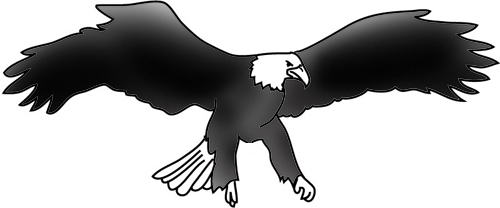
Other bald eagle facts in regards to Native Americans include:
• The Pawnee tribe thinks of bald eagles as fertility symbols because of the female eagle’s strong maternal instinct and because they build nests so high in mature, towering trees.
• When Plains Indians once performed the Sun Dance, they used whistles created with eagle wing bones.
• Some Native American tribes believe eagles carry a sick person’s prayers back to the gods.
• It is considered an extreme honor by some indigenous cultures to be awarded with an American bald eagle feather.
• Many Native Americans believe that the Creator placed birds in the sky immediately upon making the world.
• An eagle’s wings symbolize harmony between females and males.
• Anyone owning an eagle feather should show it respect by keeping it in a safe place that is visible to others. It should never be hidden away in cupboards or drawers. Bald eagle facts concerning Native American beliefs state that those honored by possessing a bald eagle feather should hang it on the wall.
• At one time in their history, Native American males would have rather had a tepee or horse taken from them than lose their American bald eagle feathers. To lose or have his feathers stolen would have been considered a great dishonor.
• Cherokees once thought of the golden eagle as a significant symbol of victory in war.
• Choctaw Indians consider the bald eagle as a symbol of peace.
Indian Myths about the Bald Eagle
Tachi Yokut Bald Eagle Legend
The Tachi Yokut is an Indian tribe living in California. This is an old legend about why the ground around Tulare Lake, now a dry, fresh-water lake located in San Joaquin Valley, California has differently colored soil.
“At a mountain southwest from the north end of Tulare Lake the ground is red and white. There the bald eagle, Owik, lived. He used to take away men’s wives but if they became angry he killed them. The prairie falcon, Limik, lived farther north in the Coast Range with the Tachi. The eagle took away his wife. Then the prairie falcon pursued him. He fought him. He broke his head with a rock and killed him. The bald eagle’s brains and blood turned the ground white and red.” (From the website www.firstpeople.us)
Kwakiutl Tribe American Bald Eagle Legend
An old Kwakiutl Tribe legend tells of how the eagle came to have such excellent eyesight.
According to myth, the American bald eagle once had poor eyesight. However, because the eagle was able to soar over treetops, an old Indian chief asked the eagle to keep watch for signs of warring tribes’ canoes.
The eagle wanted to really help the chief so he asked the slug, which had the best eyesight of all other animals, to trade eyes with him, but just until the threat of invading canoes had passed.
However, after the slug agreed and the eagle’s duty to the old Indian chief no longer existed, the eagle did not want to give back the slug’s good eyes.
As a result, the eagle retained his keen eyesight, while the poor slug is now slow and mostly blind.
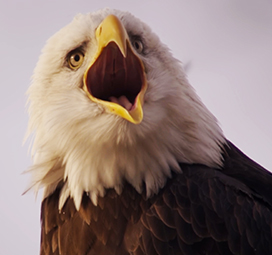
The Eagle Feather Law
The United States currently enforces an eagle feather law called 50 CFR 22, which states that only Native Americans possessing the means to certify their ancestry in a tribe formally recognized by the U.S. government can legally obtain and use eagle feathers for the purpose of spiritual or religious ceremonies. This also allows eagle feathers to be used as heirlooms in traditional Native American culture.
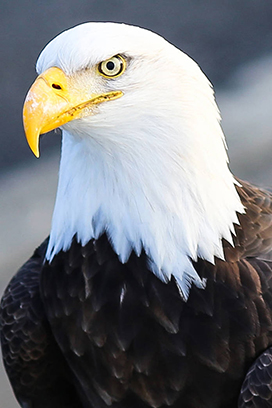
Additionally, bald eagles are strictly protected by the federal government and owning one as a pet can cause serious trouble for those who are not professional wildlife rehabilitation officers.
Even these individuals need special licenses just to transport injured bald eagles to veterinary hospitals or to take bald eagles that have been displaced by man-made environmental damage to other, more appropriate habitats.
As a symbol of freedom for Americans and as a special, integral aspect of Native American creation myths, the bald eagle deserves protection and the ability to live a liberated life unfettered by human cruelty and human disregard for the beauty of the natural world. We can never learn enough bald eagle facts about this magnificent bird of prey, which means so much to so many people.
Although studied by naturalists to understand and share knowledge of the bald eagle , perhaps these words by Alfred Lord Tennyson helps to capture the character of the bird:
The Eagle
He clasps the crag with crooked hands;
Close to the sun in lonely lands,
Ring’d with the azure world, he stands.
The wrinkled sea beneath him crawls;
He watches from his mountain walls,
And like a thunderbolt he falls.
Learning about the bald eagle as well as the mystery and legends deepens the respect for this almost lost magnificent bird of prey.